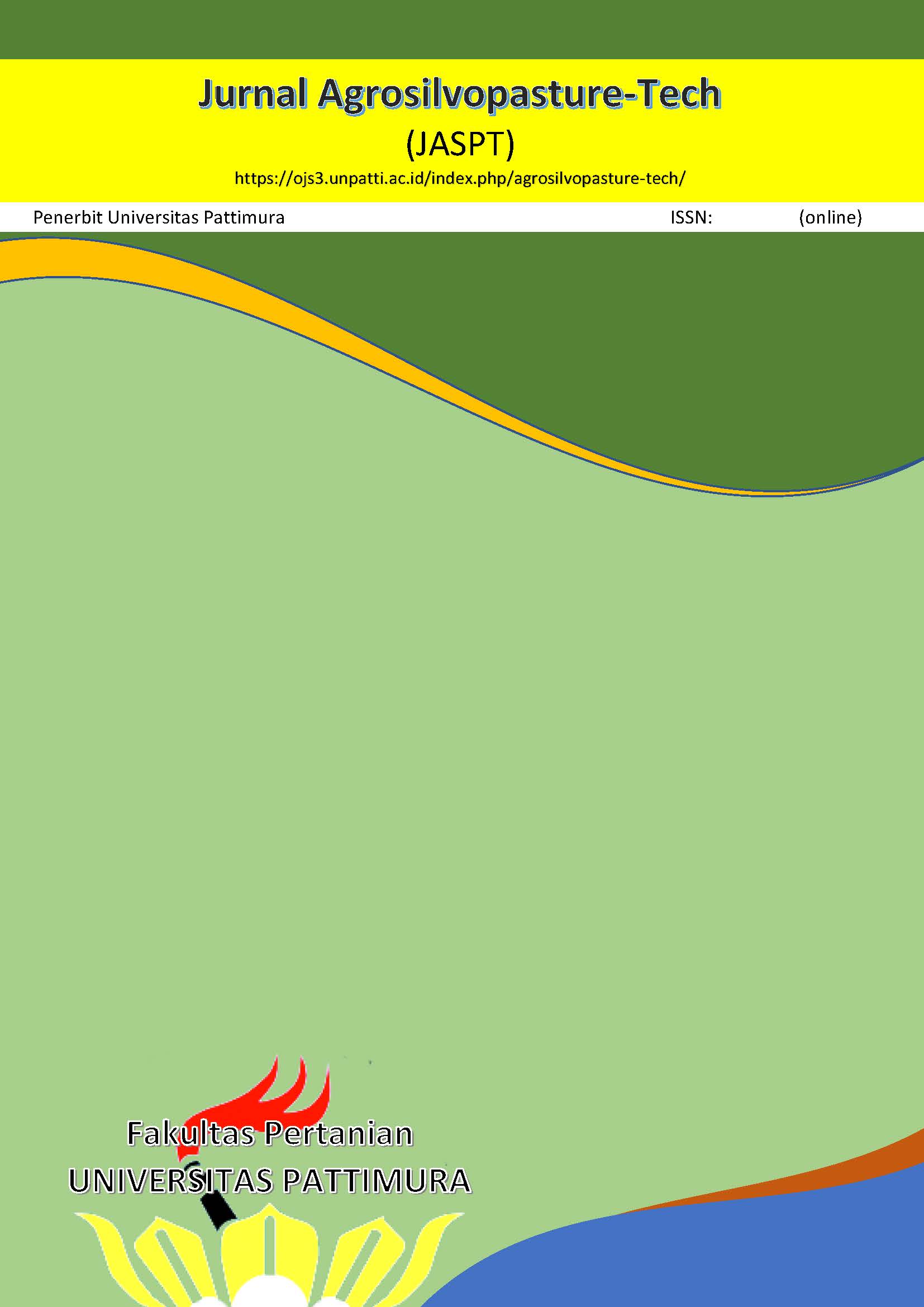The Effect of The Addition of Papaya Puree on The Chemical and Organoleptic Properties of Pineapple Jam
Abstract
based on its chemical and sensory properties. A completely randomized experimental design was applied in this study with 4 levels of treatment, namely 0%, 10%, 20%, and 30%, replicated twice. Moisture content, vitamin C content, total dissolved solids, and total acidity were measured, followed by sensory analysis. Sensory analysis was carried out using hedonic tests and descriptive hedonic qualities, which included color, taste, texture, and overall. The treatment of adding 20% papaya to jam was found to have the best chemical characteristics, namely 41.4% moisture content, 0.07% vitamin C,54.65% total soluble solids, and 1.54% total acidity. The jam with 20% papaya puree was liked for its color (3.3), taste (3.3), texture (3.1), and overall rating of (3.3) like. The jam was perceived to have an orange color (2.7), a slightly pineapple taste (2.5), and a slightly soft texture (2.9).
Downloads
References
Andreas, P., Hamzah, F., & Rahmayuni. (2017). Pembuatan selai campuran buah pepaya dan buah terung belanda. Jom Fakultas Pertanian, 4(2), 1-15.
Departemen Kesehatan RI. (2004). Daftar Komposisi Bahan Makanan. Jakarta: Departemen Kesehatan RI.
Mulyadi, A. F., Wijana, S., & Fajrin, L. L. (2015). Pemanfaatan nanas (Ananas comosus L.) subgrade sebagai fruit leather nanas guna mendukung pengembangan agroindustry di Kediri : kajian penambahan karaginan dan sorbitol. Agroteknologi, 9(2), 112-122.
Ramli, R., & Hamzah, F. (2017). Pemanfaatan buah papaya (Carica papaya L.) dan tomat (Lycopersicum Esculentum Mill.) dalam pembuatan fruith leather. Jom Fakultas Pertanian, 4(1), 1-9.
Sahman, S. (2019). Subtitusi buah papaya terhadao sifat fisik fisikokimia dan organoleptic selai blewah (Cucumis melo var. Cantalupensis L.). Semarang: Program Studi Teknologi Hasil Pertanian, Fakultas Pertanian, Universitas Semarang.
Sianipar, Y. H., Sumual, M. F., & Assa, J. R. (2021). Penambahan sari jeruk kalamansi (Citrus microcarpa, b.) dalam pembuatan selai pepaya. Jurnal Teknologi Pertanian, 12(1), 1-9.
Sukoharjanti, B. T., Aswin, U., Laksmi, & Nur, A. (2021). Analisis kadar vitamin C pada buah papaya (Carica papaya L.) dengan metode spektrofotometri UV-VIS. Prosiding Seminar Nasional Farmasi UAD 17 Juli 2021 (pp. 59-66). Yogyakarta: Fakultas Farmasi Universitas Ahmad Dahlan.
Sunarmani, & Sasmitaloka, K. S. (2019). Pepaya sebagai bahan pengisi pada produksi pasta tomat. Jurnal Teknologi dan Manajemen Agroindustri, 8(1), 67-78.
Turmala, E., Hervelly, & Wardhana, N. K. (2013). Kajian Pengaruh Konsentrasi Pektin Terhadap Karakteristik Selai Buah Campolay (Pouteria Campechiana). Bandung: Fakultas Teknik Universitas Pasundan.
Winarno, F. G. (2008). Kimia Pangan dan Gizi. Bogor: Gramedia Pustaka Utama.
Copyright (c) 2022 The Author(s)

This work is licensed under a Creative Commons Attribution-ShareAlike 4.0 International License.




.png)

